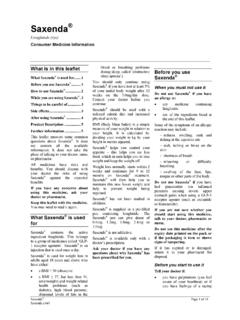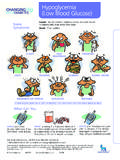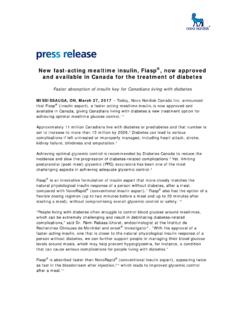Transcription of GUIDE TO CONE PENETRATION TESTING - Novo …
1 GUIDE TO. cone PENETRATION . TESTING . Engineering Units Multiples Micro ( ) = 10-6. Milli (m) = 10-3. Kilo (k) = 10+3. Mega (M) = 10+6. Imperial Units SI Units Length feet (ft) meter (m). Area square feet (ft2) square meter (m2). Force pounds (p) Newton (N). 2. Pressure/Stress pounds/foot (psf) Pascal (Pa) = (N/m2). Multiple Units Length inches (in) millimeter (mm). Area square feet (ft2) square millimeter (mm2). Force ton (t) kilonewton (kN). 2 2. Pressure/Stress pounds/inch (psi) kilonewton/meter kPa). tons/foot2 (tsf) meganewton/meter2 (MPa). Conversion Factors Force: 1 ton = kN. 1 kg = N. Pressure/Stress 1kg/cm2 = 100 kPa = 100 kN/m2 = 1 bar 1 tsf = 96 kPa (~100 kPa = MPa). 1 t/m2 ~ 10 kPa psi = 100 kPa foot of water = 1 psi 1 meter of water = 10 kPa Derived Values from CPT. Friction ratio: Rf = (fs/qt) x 100%.
2 Corrected cone resistance: qt = qc + u2(1-a). Net cone resistance: qn = qt vo Excess pore pressure: u = u2 u0. Pore pressure ratio: Bq = u / qn Normalized excess pore pressure: U = (ut u0) / (ui u0). where: ut is the pore pressure at time t in a dissipation test, and ui is the initial pore pressure at the start of the dissipation test GUIDE to cone PENETRATION TESTING for Geotechnical Engineering By P. K. Robertson and Cabal (Robertson). Gregg Drilling & TESTING , Inc. 4th Edition July 2010. Gregg Drilling & TESTING , Inc. Corporate Headquarters 2726 Walnut Avenue Signal Hill, California 90755. Telephone: (562) 427-6899. Fax: (562) 427-3314. E-mail: Website: The publisher and the author make no warranties or representations of any kind concerning the accuracy or suitability of the information contained in this GUIDE for any purpose and cannot accept any legal responsibility for any errors or omissions that may have been made.
3 Copyright 2010 Gregg Drilling & TESTING , Inc. All rights reserved. TABLE OF CONTENTS. Glossary i Introduction 1 Risk Based Site Characterization 2 Role of the CPT 3 cone PENETRATION Test (CPT) 6 Introduction 6 History 7 Test Equipment and Procedures 10 Additional Sensors/Modules 11 Pushing Equipment 12 Depth of PENETRATION 17 Test Procedures 17 cone Design 20 CPT Interpretation 24 Soil Profiling and Soil Type 25 Equivalent SPT N60 Profiles 31 Soil Unit Weight ( ) 34 Undrained Shear Strength (su) 35 Soil Sensitivity 36 Undrained Shear Strength Ratio (su/ 'vo) 37 Stress History - Overconsolidation Ratio (OCR) 38 In-Situ Stress Ratio (Ko) 39 Friction Angle 40 Relative Density (Dr) 42 Stiffness and Modulus 44 Modulus from Shear Wave Velocity 45 Estimating Shear Wave Velocity from CPT 46 Identification of Unusual Soils Using the SCPT 47 Hydraulic Conductivity (k)
4 48 Consolidation Characteristics 51 Constrained Modulus 54 Applications of CPT Results 55 Shallow Foundation Design 56 Deep Foundation Design 79 Seismic Design - Liquefaction 91 Ground Improvement Compaction Control 116 Design of Wick or Sand Drains 119 Software 120 Main References 123 CPT GUIDE 2010 Glossary Glossary This glossary contains the most commonly used terms related to CPT and are presented in alphabetical order. CPT. cone PENETRATION test. CPTu cone PENETRATION test with pore pressure measurement piezocone test. cone The part of the cone penetrometer on which the cone resistance is measured. cone penetrometer The assembly containing the cone , friction sleeve, and any other sensors, as well as the connections to the push rods. cone resistance, qc The force acting on the cone , Qc, divided by the projected area of the cone , Ac.
5 Qc = Qc / Ac Corrected cone resistance, qt The cone resistance qc corrected for pore water effects. qt = qc + u2(1- a). Data acquisition system The system used to record the measurements made by the cone . Dissipation test A test when the decay of the pore pressure is monitored during a pause in PENETRATION . Filter element The porous element inserted into the cone penetrometer to allow transmission of pore water pressure to the pore pressure sensor, while maintaining the correct dimensions of the cone penetrometer. Friction ratio, Rf The ratio, expressed as a percentage, of the sleeve friction, fs, to the cone resistance, qt, both measured at the same depth. Rf = (fs/qt) x 100%. i CPT GUIDE - 2010 Glossary Friction reducer A local enlargement on the push rods placed a short distance above the cone penetrometer, to reduce the friction on the push rods.
6 Friction sleeve The section of the cone penetrometer upon which the sleeve friction is measured. Normalized cone resistance, Qt The cone resistance expressed in a non-dimensional form and taking account of the in-situ vertical stresses. Qt = (qt vo) / 'vo Normalized cone resistance, Qtn The cone resistance expressed in a non-dimensional form taking account of the in-situ vertical stresses and where the stress exponent (n) varies with soil type and stress level. When n = 1, Qtn = Qt. n q vo Pa . Qtn = t . Pa 2 ' vo . Net cone resistance, qn The corrected cone resistance minus the vertical total stress. qn = qt vo Excess pore pressure (or net pore pressure), u The measured pore pressure less the in-situ equilibrium pore pressure. u = u2 u0. Pore pressure The pore pressure generated during cone PENETRATION and measured by a pore pressure sensor: u1 when measured on the cone face u2 when measured just behind the cone .
7 Pore pressure ratio, Bq The net pore pressure normalized with respect to the net cone resistance. Bq = u / qn Push rods Thick-walled tubes used to advance the cone penetrometer Sleeve friction, fs The frictional force acting on the friction sleeve, Fs, divided by its surface area, As. fs = Fs / A s ii CPT GUIDE 2010 Introduction Introduction The purpose of this GUIDE is to provide a concise resource for the application of the CPT to geotechnical engineering practice. This GUIDE is a supplement and update to the book CPT in Geotechnical Practice' by Lunne, Robertson and Powell (1997). This GUIDE is applicable primarily to data obtained using a standard electronic cone with a 60-degree apex angle and either a diameter of mm or mm (10 or 15 cm2 cross-sectional area). Recommendations are provided on applications of CPT data for soil profiling, material identification and evaluation of geotechnical parameters and design.
8 The companion book provides more details on the history of the CPT, equipment, specification and performance. A companion GUIDE to CPT for Geo-environmental Applications is also available. The companion book also provides extensive background on interpretation techniques. This GUIDE provides only the basic recommendations for the application of the CPT for geotechnical design A list of the main references is included at the end of this GUIDE . A more comprehensive reference list can be found in the companion CPT book. 1. CPT GUIDE - 2010 Risk Based Site Characterization Risk Based Site Characterization Risk and uncertainty are characteristics of the ground and are never fully eliminated. The appropriate level of sophistication for site characterization and analyses should be based on the following criteria: Precedent and local experience Design objectives Level of geotechnical risk Potential cost savings The evaluation of geotechnical risk is dependent on hazards, probability of occurrence and the consequences.
9 Projects can be classified as either low, moderate or high risk, depending on the above criteria. Table 1 shows a generalized flow chart to illustrate the likely geotechnical ground investigation approach associated with risk. The level of sophistication in a site investigation is also a function of the project design objectives and the potential for cost savings. Table 1 Risk-based flowchart for site characterization 2. CPT GUIDE - 2010 cone PENETRATION Test (CPT). Role of the CPT. The objectives of any subsurface investigation are to determine the following: Nature and sequence of the subsurface strata (geologic regime). Groundwater conditions (hydrologic regime). Physical and mechanical properties of the subsurface strata For geo-environmental site investigations where contaminants are possible, the above objectives have the additional requirement to determine: Distribution and composition of contaminants The above requirements are a function of the proposed project and the associated risks.
10 An ideal investigation program should include a mix of field and laboratory tests depending on the risk of the project. Table 2 presents a partial list of the major in-situ tests and their perceived applicability for use in different ground conditions. Table 2. The applicability and usefulness of in-situ tests (Lunne, Robertson & Powell, 1997). 3. CPT GUIDE - 2010 cone PENETRATION Test (CPT). The cone PENETRATION Test (CPT) and its enhanced versions ( piezocone- CPTu and seismic-SCPT) have extensive applications in a wide range of soils. Although the CPT is limited primarily to softer soils, with modern large pushing equipment and more robust cones, the CPT can be performed in stiff to very stiff soils, and in some cases soft rock. Advantages of CPT: Fast and continuous profiling Repeatable and reliable data (not operator-dependent).
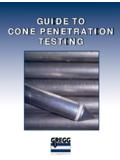
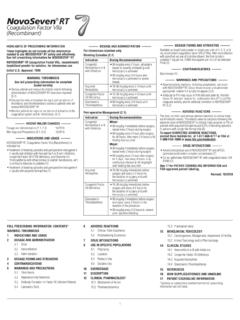
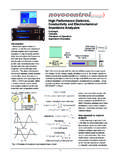
![Schedule D] - Novo Nordisk Canada](/cache/preview/b/f/c/5/9/9/f/5/thumb-bfc599f58969b8bff3fb0f7d9d95ed1e.jpg)
